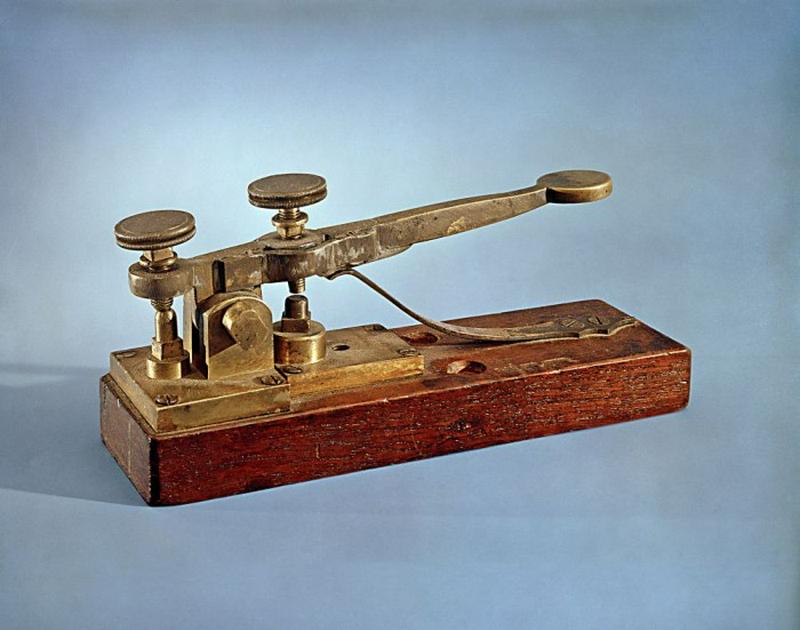Innovations of the Industrial Revolution
By | December 6, 2018

One of the most successful inventions of the Industrial Revolution completely transformed long-distance communication. Ancient civilizations used smoke signals and drumbeats to send messages. By the early nineteenth century, the best improvement to this method was a system of hilltop stations and telescopes, called a semaphore, which suffered many of the same limitations as smoke signals.
The electric telegraph changed all that. The credit for this one is shared by two groups of inventors. Sir William Cooke and Sir Charles Wheatstone introduced theirs in the 1830s, using magnetic needles and a panel of letters and numbers. Meanwhile, U.S. researchers, Samuel Morse, Leonard Gale, and Alfred Vail were working on their own version, which used a code developed by Morse (Morse code) to transmit messages. Their first successful message was transmitted on May 24, 1844.

The telegraph would never have been possible if not for two other inventions of the Industrial Revolution. First, was the world’s first electric battery, which was invented in 1800 by Italian physicist, Alessandro Volta. The Volta battery allowed electricity to be stored and used in a controlled environment.
The second invention which made way for the telegraph was the electromagnet. It began with a demonstration by Danish physicist Hans Christian Oersted in 1820 which indicated a connection between electricity and magnetism. It was later built upon by Andre-Marie Ampere and Dominique Francois Jean Arago. Their research made it possible for William Sturgeon to create the world’s first electromagnetic. Then in 1832, Joseph Henry improved Sturgeon’s design, creating an electromagnet strong enough to lift 1,630 kilograms.

Most people don’t think of cement as innovative. In fact, the ancient Egyptians were using something similar when they began using mud and straw to make bricks while using gypsum and lime as mortar. When building the Colosseum and the Pantheon, the ancient Romans used a material similar to cement, created from volcanic ash, lime, and salt water. However, this mixture dried very slowly and would, therefore, be impractical today.
In 1824, a bricklayer named Joseph Aspdin came up with a process for making cement by burning and grinding a mixture of limestone and clay, which could later be mixed with water to form concrete. He called it Portland cement due to its resemblance to a type of building stone called Portland Stone. While its composition has changed somewhat over the years, Portland cement is still the most commonly used cement in the world.

In today’s computer-driven society, typewriters have become obsolete, existing mostly in antique stores and the homes of the most sentimental writers. However, at one time, they were an invaluable resource as they vastly decreased the amount of time required for documents and manuscripts to be transcribed.
The first successful typewriter was not invented until several years after the Industrial Revolution, by Christopher Sholes. However, a precursor to the typewriter, called a typographer, was invented in 1829 by William Austin Burt and is considered to be the first documented invention of a writing mechanism, though a patent obtained by Henry Mill in 1714 suggests he was working on a similar invention. Burt’s invention used a dial rather than a keyboard and, for this reason, was actually slower than writing by hand. As a result, it was not commercially successful.

The first steam engines were actually introduced in 1712, before the Industrial Revolution, by Thomas Newcomen. It operated by pushing steam into a cylinder, then cooling the steam with water to make it condense, creating atmospheric pressure to force the piston down. Unfortunately, this process also cooled the cylinder and it required a lot of heat to warm it back up.
In 1775, James Watt invented a steam engine with a separate condenser, thus making it far more efficient by reducing the amount of heat loss. He eventually added a gear system to replace the water wheel used by older model steam engines. This eliminated the need to always be near a water source. Watt’s engine provided a model for all future engines for years to come.

Before the Industrial Revolution, wagonways – which were roads made with rails – allowed carts and wagons to move more smoothly. However, the wagonways still required horses to pull the wagons, thus limiting their speed as well as the maximum weight which could be carried. However, the invention of the steam engine provided a solution.
In 1802, funded by Samuel Homfray, Richard Trevithick built a steam-engine road locomotive which was able to move ten tons of iron, seventy men, and five wagons. It completed a nine-mile journey in two hours. George Stephenson invented the first steam-engine locomotive designed for a railroad and his train was able to pull six coal cars and twenty-one passenger cars with a total of 450 passengers. A nine-mile journey took just under an hour.
These are just a sample of the many innovations which occurred during the Industrial Revolution, most of which are still around in some form today. While some of these may seem basic now, they were the game changers of the era and many luxuries taken for granted today would not be possible without these inventions.

